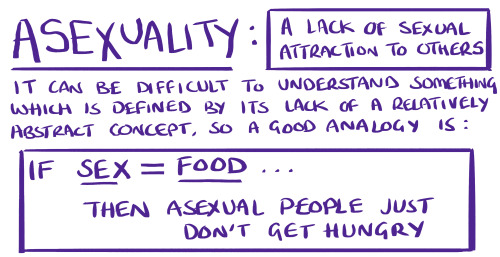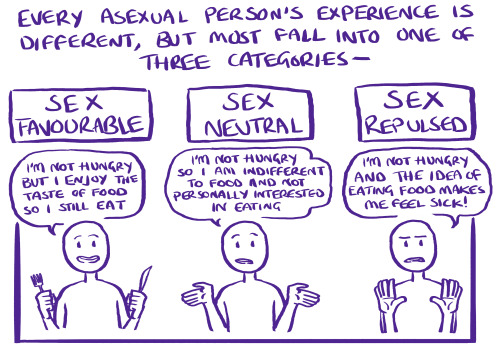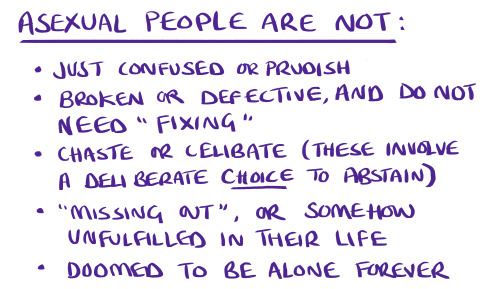That Rabbit/hare Post Is Messing Me Up. I’d Thought They Were Synonyms. Their Development And Social
That rabbit/hare post is messing me up. I’d thought they were synonyms. Their development and social behavior are all different. They can’t even interbreed. They don’t have the same number of chromosomes. Dogs, wolves, jackals, and coyotes can mate with each other and have fertile offspring but rabbits and hares cant even make infertile ones bc they just die in the womb. Wack.
More Posts from Enbylvania65000 and Others




after the huge amazing response I got from my ace!Jiang Cheng comic - all of the ace people saying how amazing it felt to be acknowledged, and all of the people who came to me saying that they hadn’t realised they were ace until they read the comic - I decided I wanted to make something for ace awareness week. it’s not quite as pretty or feelsy as the other comic, but there are so many people even within the LGBT+ community who just… genuinely do not understand asexuality, I figured even something basic would help :)
happy ace awareness week! please remember: everyone’s experience with sexuality is different! be kind and support each other!
The Early Therocene: 30 million years post-establishment

In Plains Sight: Life in the Noderan Plains
The continent of Nodera is thriving in the beginning of the new era of HP-02017's history: the Therocene Era. New forms of hamsters have gotten bigger and bigger as time went on, and thirty million years later they have finally attained the niches of megafauna, and spread upon the continents once the land bridges became exposed during a brief period of glaciation that marked the end of the Rodentocene Era 5 million years earlier.
Today the ecosystems of Nodera have attained a diversity like never before, as enormous creatures of various clades have spread throughout its grasslands and filled numerous herbivore niches. Most prevalent are the bipedal hopping boingos, large descendants of the jerryboas that have become widespread as the predominant plains grazers, with the boldly-striped streaky zibba (Saltozebroides melanoleuca) being one such example. Another common grazer is the massive Noderan plains mison (Buffalomys noderus), the heaviest megafauna of Nodera.
Despite competition from the mison and the boingos, the hamtelopes of Nodera are also thriving in the plains. Some have evolved to become much smaller, feeding on low-growing softer plants in the plains, such as the lesser plains phonie (Equinomimus minimus), while others went the opposite route, becoming the towering long-necked girats, such as the axehorn girat (Altocervimys securiceros) which became high browsers specializing on the sparse, thorny trees that grow sporadically throughout the open grassland.
Such a wide diversity of herbivores in one same ecosystem is made possible by the unique phenomenon of niche partitioning, where each herbivore specializes in eating different plants, or different parts of the same plants, and thus can coexist with minimal competition. Tall, tough grasses grow in abundance in the Noderan plains, and the mison greatly relish the leaves- but not the sheaths and tough woody stems. Once the mison have passed, the boingos move in: with teeth adapted for abrasive vegetation they feast upon the woody stems and twigs that the mison ignore, and once the boingos too move on, the grass begins producing tender new regrowth, which small hamtelopes such as the phonies in turn feed upon.
The abundance of herbivores brings about in turn a diversity of predators, which specialize to hunt in the plains. Ratbats-of-prey such as the northern striped hawkbat (Nyctaccipiter borealis) soar above the plains seeking out small prey, such as jerryboas and small hamtelopes, while on the ground, large carnivorous fearrets, known as the carnohams, reign as the top predator of the open grassland. The largest of them, the lion-sized grassland nottiger (Pseudopanthera tigrileo), is Nodera's biggest carnivore, and specializes on hamtelopes, boingos, and the young of girats and mison, though adults are far too large for them to tackle.
This diversity is but a tiny fraction of the large new life that has dawned on the planet in the Early Therocene. In other continents and other biomes, thousands of other species thrive and evolve: all from one single species millions of years ago.
I have a book of Celtic mythology at home, can confirm Old Welsh and Old Irish stories are like that.
Old Welsh lit: Dave punched Steve. This incurred a fine of twelve cattle and a nine-inch rod of silver and is known as one of the Three Midly Annoying Blows of the Isle of Britain
Old Irish lit: Dave punched Steve so that the top of his skull came out of his chin, and gore flooded the house, and he drove his fists down the street performing his battle-feats so that the corpses were so numerous there was no room for them to fall down. It was like “the fox among the hens” and “the oncoming tide” and “that time Emily had eight drinks when we all know she should stop at six”
Old English lit: Dave, the hard man, the fierce man, the fist-man, gave Steve such a blow the like has not been seen since the feud between the Hylfings and the Wends. Thus it is rightly said that violence only begets more violence, unless of course it is particularly sicknasty. Amen.

@why-this-eurovision-mess requested alexander rybak!


10,000 IQ Deduction (EGSNP)
Nonchalant Ashley (Sketchbook)
Larry cleverly deduces that Ashley has transformed herself at the mall and hopes that no one, especially Rich, notices.
Wait, that doesn't sound right.


The Indian side of the Indo-Gangetic plains, one of the most populous patches on Earth and home to over half a billion people. Each white dot is a human settlement.
my quality of life has improved tenfold ever since i was introduced to breezewiki, a site that exists solely to remove the bloat from fandom.com wikis. no more ads, quizzes, random autoplaying videos, popups, recommended pages from other sites, or discord server member lists. just the wiki. these things are finally readable again
-
 guakamoleboi liked this · 3 weeks ago
guakamoleboi liked this · 3 weeks ago -
 akerensumi-is-canon reblogged this · 4 weeks ago
akerensumi-is-canon reblogged this · 4 weeks ago -
 gallifreyriver reblogged this · 1 month ago
gallifreyriver reblogged this · 1 month ago -
 jessilynallendilla reblogged this · 1 month ago
jessilynallendilla reblogged this · 1 month ago -
 solphuruz reblogged this · 1 month ago
solphuruz reblogged this · 1 month ago -
 lollypop90907 liked this · 1 month ago
lollypop90907 liked this · 1 month ago -
 rammyrue reblogged this · 1 month ago
rammyrue reblogged this · 1 month ago -
 greeneruvyreth liked this · 1 month ago
greeneruvyreth liked this · 1 month ago -
 goosehasapencil reblogged this · 1 month ago
goosehasapencil reblogged this · 1 month ago -
 goosehasapencil liked this · 1 month ago
goosehasapencil liked this · 1 month ago -
 egguseggboy liked this · 1 month ago
egguseggboy liked this · 1 month ago -
 greenwitchempath liked this · 1 month ago
greenwitchempath liked this · 1 month ago -
 radellama reblogged this · 1 month ago
radellama reblogged this · 1 month ago -
 motionpicturedemise reblogged this · 1 month ago
motionpicturedemise reblogged this · 1 month ago -
 motionpicturedemise liked this · 1 month ago
motionpicturedemise liked this · 1 month ago -
 choppedtitties reblogged this · 1 month ago
choppedtitties reblogged this · 1 month ago -
 amorachinchilla liked this · 2 months ago
amorachinchilla liked this · 2 months ago -
 pornbotfromhell reblogged this · 2 months ago
pornbotfromhell reblogged this · 2 months ago -
 mendelnavi reblogged this · 2 months ago
mendelnavi reblogged this · 2 months ago -
 angelkss liked this · 2 months ago
angelkss liked this · 2 months ago -
 voxaris reblogged this · 2 months ago
voxaris reblogged this · 2 months ago -
 etrosgate reblogged this · 2 months ago
etrosgate reblogged this · 2 months ago -
 dewprisms reblogged this · 2 months ago
dewprisms reblogged this · 2 months ago -
 reunionandthen liked this · 2 months ago
reunionandthen liked this · 2 months ago -
 megaxard reblogged this · 2 months ago
megaxard reblogged this · 2 months ago -
 tautomerize reblogged this · 2 months ago
tautomerize reblogged this · 2 months ago -
 boudicca-of-iceni liked this · 2 months ago
boudicca-of-iceni liked this · 2 months ago -
 imperial-red01 liked this · 2 months ago
imperial-red01 liked this · 2 months ago -
 demitheshine liked this · 2 months ago
demitheshine liked this · 2 months ago -
 akerensumi-is-canon liked this · 2 months ago
akerensumi-is-canon liked this · 2 months ago -
 nelkey liked this · 2 months ago
nelkey liked this · 2 months ago -
 puppys-rhythm-heaven reblogged this · 2 months ago
puppys-rhythm-heaven reblogged this · 2 months ago -
 the-starsystem reblogged this · 2 months ago
the-starsystem reblogged this · 2 months ago -
 the-starsystem reblogged this · 2 months ago
the-starsystem reblogged this · 2 months ago -
 cyberglyphs liked this · 2 months ago
cyberglyphs liked this · 2 months ago -
 chickensandwichcarl liked this · 2 months ago
chickensandwichcarl liked this · 2 months ago -
 dhavaer reblogged this · 2 months ago
dhavaer reblogged this · 2 months ago -
 cheloneuniverse liked this · 2 months ago
cheloneuniverse liked this · 2 months ago -
 flamingears reblogged this · 2 months ago
flamingears reblogged this · 2 months ago -
 flamingears liked this · 2 months ago
flamingears liked this · 2 months ago -
 astella-artem liked this · 2 months ago
astella-artem liked this · 2 months ago -
 godsamael liked this · 2 months ago
godsamael liked this · 2 months ago -
 ospreyonu reblogged this · 2 months ago
ospreyonu reblogged this · 2 months ago -
 drumpenguin reblogged this · 2 months ago
drumpenguin reblogged this · 2 months ago -
 somerandomshithead reblogged this · 2 months ago
somerandomshithead reblogged this · 2 months ago -
 herehaveafandom reblogged this · 3 months ago
herehaveafandom reblogged this · 3 months ago -
 fancy-noise liked this · 3 months ago
fancy-noise liked this · 3 months ago -
 luckyicekitsune liked this · 3 months ago
luckyicekitsune liked this · 3 months ago -
 welcome-home-official reblogged this · 3 months ago
welcome-home-official reblogged this · 3 months ago


